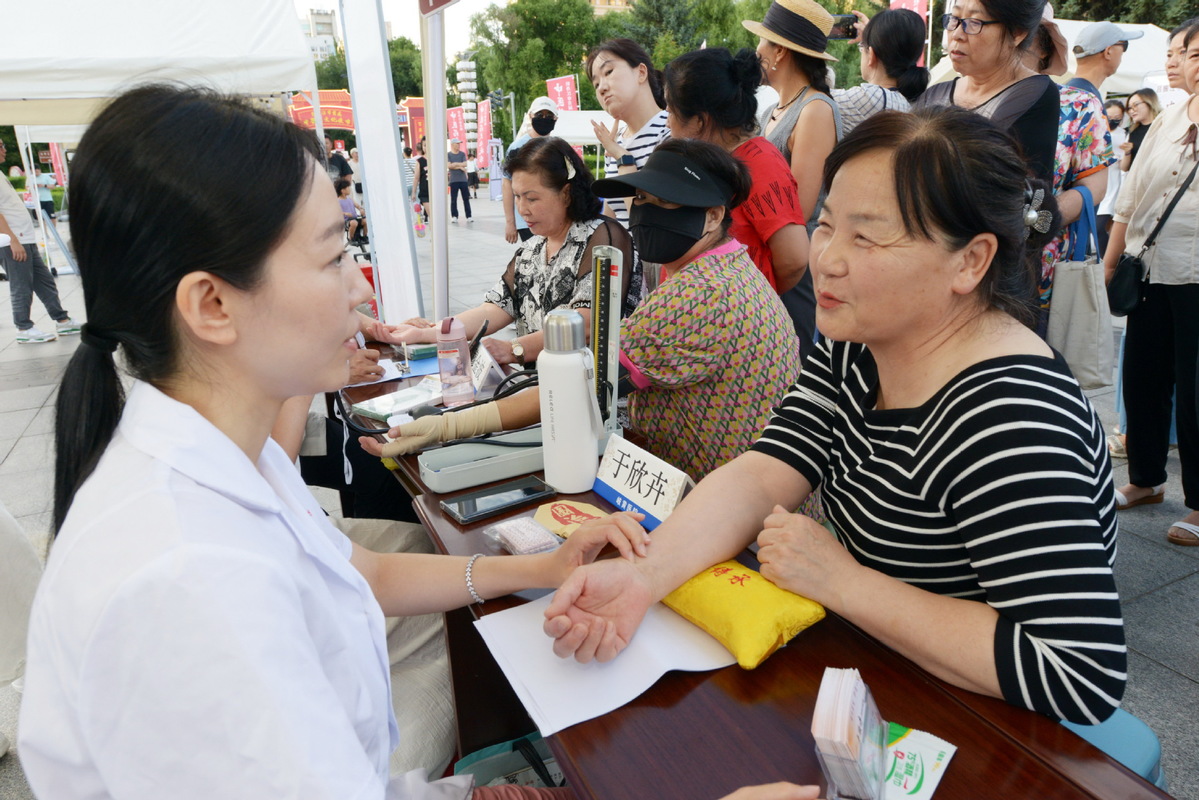Traditional Chinese medicine bridges cultures, generations


For Yelena Sergeyevna Morozova, a 52-year-old woman from Khabarovsk, Russia, simply tying her shoelaces was once a painful ordeal due to chronic lumbar issues until she discovered unexpected relief across the border in northeast China.
Last year, Yelena received a traditional needle knife treatment at Heihe Traditional Chinese Medicine (TCM) hospital in Heilongjiang province twice. Afterward, she was able to bend pain-free for the first time in years and gained a newfound faith in this millennia-old medical tradition.
From local remedy to global appeal
Located on the China-Russian border, Heihe faces Blagoveshchensk City across the Heilongjiang River. Thanks to its proximity, Heihe's TCM hospital has become a cross-border health destination. In 2024, over 600 Russian patients received treatments ranging from acupuncture and cupping to Tuina massage and needle knife therapy, along with more than 300 tailored herbal prescriptions.
To serve its growing international patients, the hospital has established a bilingual medical team and upgraded its herbal preparation facilities. Booking is quite simple. Russian patients can make appointments online using just a scanned copy of their passport and receive full support from interpreters throughout their visit.
In the future, the hospital plans to promote wellness tourism by combining TCM treatments with nearby natural attractions like the Wudalianchi volcanic springs, creating a "treatment-while-traveling" approach that blends ancient wisdom with modern convenience.
TCM has won greater international recognition in recent years. The Chinese government encourages international TCM cooperation, including the opening of overseas TCM clinics. So far, China has signed TCM cooperation agreements with over 40 countries and organizations, and Chinese medical practices have reached 196 countries and regions.
For instance, the Sanya Hospital of TCM has partnered with the Canadian College of Acupuncture and TCM to establish a new treatment center. China also plans to train 1,300 TCM professionals from Belt and Road countries by 2028.
Ancient wisdom, new followers
TCM's appeal isn't just for foreign patients. At home, it's experiencing a revival among younger Chinese, especially city dwellers.
In Heihe, the hospital is tapping into the trend by offering popular portable wellness products like herbal teas for liver detox and weight loss, mosquito-repellent sachets, and home health kits.
In cities like Shanghai, herbal-flavored ice cream has become an unexpected hit with Gen Z. On social media platforms like Xiaohongshu, traditional practices are getting a digital makeover. The hashtag for Baduanjin, a traditional breathing and stretching exercise, has amassed nearly 900 million views. Another called TCM Tea has attracted 1.68 billion views as users share videos of moxibustion, sunbathing rituals, and herbal brews aimed at curing screen-related issues like insomnia and eye strain.
"Young people are becoming more proactive about their well-being," said Deng Yong, a professor at Beijing University of Chinese Medicine. "The idea of treating the root cause and balancing the body fits their mindset."
From Russians seeking back pain relief to Chinese youth sipping herbal tea while scrolling Xiaohongshu, TCM is undergoing a quiet transformation. Rooted in tradition yet adapting to the times, it is honoring its origins while connecting with a global and younger audience.




































